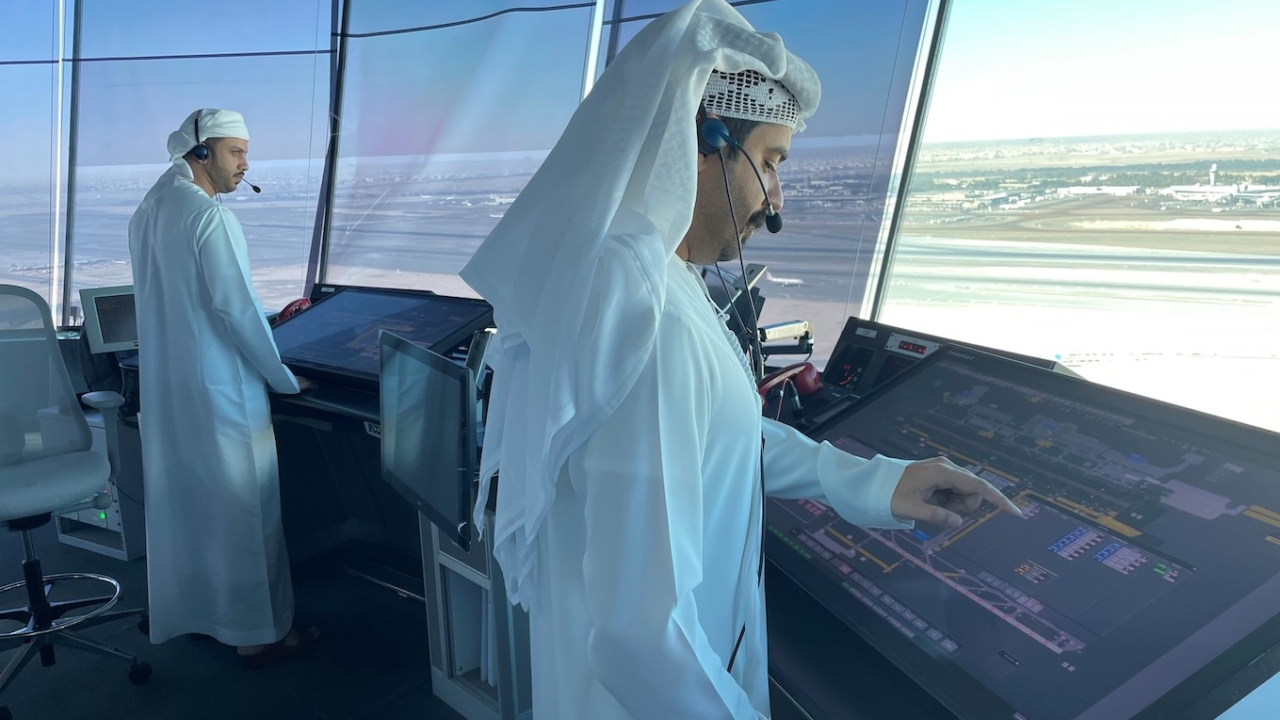Heads up on Pad power
Following the opening of its new terminal A in November 2023, Zayed International Airport (formerly Abu Dhabi International) is on an upward trajectory expecting to handle around 45 million passengers annually. Gigi King investigates.

Managing traffic at the air transport hub (which currently sees between 600 and 800 aircraft movements a day) involves a comprehensive approach to ensure safe, efficient and sustainable operations.
The deployment of TowerPad as part of Frequentis’ advanced automated tower product suite is enabling just that providing the automation and surveillance of airport surface movements at the air transport hub, which is operated by Abu Dhabi Airports.
Since deploying TowerPad in 2022, the airport has achieved an 80 per cent reduction in “stop and go” operations, as well as a 70 per cent reduction in operator workload and 30 per cent higher aircraft ground movements.
Josef Kutschi, managing director Frequentis Middle East, explained that by providing artificial intelligence to support advanced user-centric automation services, TowerPad gives air traffic controllers (ATCOs) a clear view of all ground and airspace operations. He also noted: “In addition to enhancing safety and efficiency, it reduces taxi times and consequently the environmental impact of airport traffic.”
All air traffic control (ATC) applications are integrated onto one screen enabling controllers to see everything from approach to ground movements without having to access multiple screens. “Controllers can really focus on what’s going on outside the tower window, as there is less head-down time,” said Kutschi.
He also explained that the automated technology integrates with the advanced surface movement guidance and control system (A-SMGCS) to provide tailored services covering surveillance, safety control, planning, routing and guidance, whilst factoring in local procedures and infrastructure constraints.
One of TowerPad’s key benefits, according to Kutschi, is its ability to reduce taxi times and maintain the flow of traffic, thus helping to decarbonise ground operations at the airport by enabling significant cuts in fuel burn and toxic emissions. “Our routing and guidance function enables us to determine the quickest route to the runway and avoid queues on holding points, therefore reducing unnecessary fuel burn,” he said.
Kutschi added that the ability to forecast movements is key here. “By predicting certain routes from the stands to the threshold of the runway as well as the other aircraft that are being readied for departure, we can sequence operations to minimise aircraft stopping and then moving on again, which is a major cause of fuel burn when taxiing.”
Close collaboration with the airport’s ground handling teams to understand turnaround processes and times has also been integral to this process.
The big challenge in terms of implementing the automated technology at Zayed International was the change in how tower operations are managed. “It was a rigorous process, but we engaged with Abu Dhabi’s Global Air Navigation Services (GANS) from an early stage and worked hand-in-hand with their air traffic controllers to understand their requirements and ensure a smooth transition,” Kutschi said.
Noting that the collaboration with Abu Dhabi Airports has marked the first roll out of TowerPad in the region, Kutschi revealed that following its success at Zayed International, Frequentis now hopes to deploy its technology at other airports across the Middle East. “With hundreds of aircraft on order for the big three Gulf carriers over the next decade, our focus is on facilitating that increase in air traffic for airports as seamlessly, safely and sustainably as possible,” he said.
As for the wider use of AI in tower operations, Kutschi concluded that while automated services will be more widely adopted, they won’t ever replace ATCOs as a resource. “AI should be seen as a support function that can augment controller operations and alleviate workload. However, controllers should always be able to override any recommendations made by an AI agent or automated service, to ensure they remain firmly in control,” he said.
Stay up to date
Subscribe to the free Times Aerospace newsletter and receive the latest content every week. We'll never share your email address.

